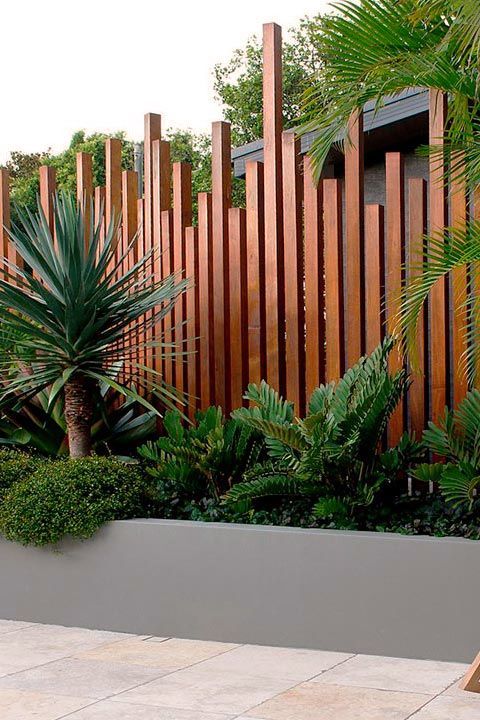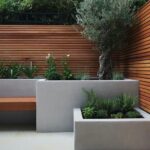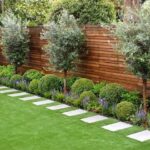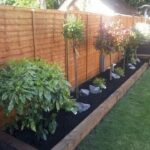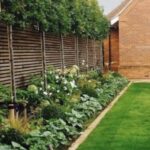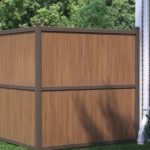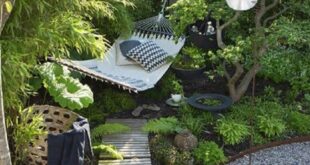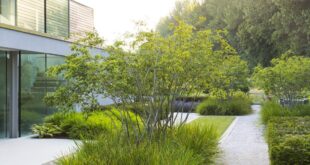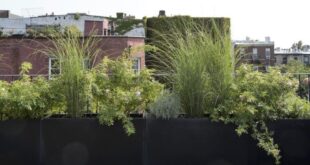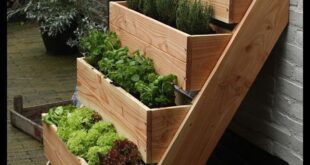In a world where connection is constantly celebrated, the value of solitude finds itself underappreciated. Yet, nestled within the confines of our busy lives, there is a longing—a longing for spaces untouched by the prying eyes of the outside world. This article delves into the intricate craft of establishing such personal havens through the art of privacy fencing. “Secluded Sanctuaries: Mastering the Art of Privacy Fencing” seeks to guide you through the delicate balance of aesthetics and functionality. As we explore varied techniques and materials, we’ll unlock the secrets to transforming ordinary yards into tranquil shelters, where moments of peace become possible, and privacy is an art form lovingly mastered.
Choosing the Right Materials for Your Privacy Fence
 When it comes to creating your serene retreat, selecting the right materials for your privacy fence is essential for both aesthetic appeal and functionality. Different materials bring distinct characteristics to your outdoor haven, and aligning these with your personal needs and local climate can make all the difference.
When it comes to creating your serene retreat, selecting the right materials for your privacy fence is essential for both aesthetic appeal and functionality. Different materials bring distinct characteristics to your outdoor haven, and aligning these with your personal needs and local climate can make all the difference.
Wood: A timeless choice, wood offers natural beauty and warmth that seamlessly blend into the landscape. Western Red Cedar and Redwood are top picks due to their robustness and resistance to decay. However, wood requires regular maintenance such as staining or sealing to maintain its charm. For those who prefer a more rustic or vintage look, untreated wood that weathers naturally is also an alluring option.
Vinyl: For those seeking low maintenance without compromising on aesthetics, vinyl is a superb alternative. Available in a plethora of styles and colors, vinyl fences can mimic the appearance of wood while providing the added benefits of being resistant to pests and rot. Its longevity and ease of cleaning make it a convenient option for many homeowners.
Metal: Utilizing metals like aluminum or wrought iron can introduce an elegant and sophisticated appeal. While aluminum is lightweight and rust-resistant, wrought iron is incredibly durable and can be crafted into intricate designs. However, it’s important to note that wrought iron may require periodic painting to prevent rust.
Composite: A blend of wood fibers and plastic, composite materials are gaining popularity due to their durability and minimal upkeep. These fences offer the visual allure of wood but are resilient against weathering and pests. Additionally, they are available in various textures and colors, allowing for customization to suit any landscape design.
| Material | Pros | Cons |
|---|---|---|
| Wood | Natural beauty, versatile designs | High maintenance, susceptible to rot |
| Vinyl | Low maintenance, pest resistant | Can be expensive, less natural look |
| Metal | Durable, elegant appearance | Can corrode, needs occasional upkeep |
| Composite | Durable, low maintenance | Limited colors, can be pricey |
Whether aiming for rustic charm or sleek modernity, the material you choose for your privacy fence shapes the essence of your secluded haven. Taking the time to evaluate the advantages and disadvantages of each material can guide you toward a more informed and satisfactory decision.
Designing for Aesthetics: Integrating Style and Function
 A successful privacy fence goes beyond mere functionality; it becomes an artistic element of your landscape, blending seamlessly with both nature and architecture. Aesthetics and functionality are the keystones of an ideal design that offers not just seclusion but also enhances the visual appeal of your outdoor space. To achieve this, consider the following elements:
A successful privacy fence goes beyond mere functionality; it becomes an artistic element of your landscape, blending seamlessly with both nature and architecture. Aesthetics and functionality are the keystones of an ideal design that offers not just seclusion but also enhances the visual appeal of your outdoor space. To achieve this, consider the following elements:
-
- Material Selection: Choose materials that complement the existing architecture and landscaping. For instance, natural wood offers warmth and blends well with a garden setting, while sleek aluminum or steel imparts a modern vibe.
-
- Color Palette: Harmonize the fence color with your home and garden. Earthy tones can create a serene, cohesive look, while bold hues can make your fence a statement piece.
-
- Textural Variety: Mix materials to add visual interest. Combining wood with metal or incorporating plantings within the fence design can break up monotony and create focal points.
To illustrate how effectively you can combine aesthetic appeal with practical function, let’s consider a few design strategies:
| Design Strategy | Explanation |
|---|---|
| Vertical Gardens | Utilize the fence as a vertical garden. Incorporating planters or climbing plants can provide natural texture and color. |
| Integrated Seating | Design benches or seating areas within the fence. This dual functionality maximizes space and usability. |
| Decorative Lattice | Add decorative lattice panels that offer partial privacy while allowing light to filter through, creating intricate shadow patterns. |
Ultimately, the goal is to create a sanctuary that feels like an extension of your indoor living space. Soft lighting can imbue an area with warmth and mystery, ornamental details like finials or decorative caps can add an element of sophistication, and natural elements like stone or plants can connect the space to its environment.
As you explore various aesthetic options, remember that the best designs balance both style and functionality. Your privacy fence should not only define your property line but also invite serenity and beauty into your outdoor living space.
Installation Tips: Ensuring Stability and Durability
 The key to transforming your yard into a secluded sanctuary lies in both the robustness and the resilience of your privacy fence. A steady foundation is paramount, ensuring that it withstands both the ravages of weather and the tests of time. Begin by selecting the right materials. Pressure-treated wood, vinyl, and composite options are lauded for their durability and longevity, resisting rot, pests, and decay more efficiently than untreated natural wood.
The key to transforming your yard into a secluded sanctuary lies in both the robustness and the resilience of your privacy fence. A steady foundation is paramount, ensuring that it withstands both the ravages of weather and the tests of time. Begin by selecting the right materials. Pressure-treated wood, vinyl, and composite options are lauded for their durability and longevity, resisting rot, pests, and decay more efficiently than untreated natural wood.
Consider the terrain of your landscape. Sloped land and uneven ground pose challenges that require tailored solutions. When installing on a slope, stagger your panels appropriately to maintain a consistent height and avoid unsightly gaps. This not only leads to aesthetic harmony but enhances structural stability. Utilizing stainless steel screws and brackets further strengthens the framework, providing a steadfast hold through seasonal changes.
To mitigate the threat of ground moisture and frost heaving, set your fence posts in concrete footings. The recommended depth for post holes is generally one-third of the post height plus an additional six inches for gravel to allow drainage. Here’s a brief guide for post depth relative to fence height:
| Fence Height | Post Depth |
|---|---|
| 4 feet | 18 inches + 6 inches gravel |
| 6 feet | 24 inches + 6 inches gravel |
| 8 feet | 30 inches + 6 inches gravel |
Lastly, the fencing installation must adapt to local climatic conditions. Moisture barriers like waterproof sealants can be applied to wooden fences to keep dampness at bay, vital in humid regions. Vinyl fences, while low-maintenance, may require additional UV protection coatings in areas with intense sunlight to prevent wear and discoloration. Maintenance is the keystone to your fence’s longevity, so regular inspections and timely repairs fortify its enduring presence.
Landscaping Harmony: Blending Fences with Nature
 The beauty of a privacy fence lies not just in its functionality, but also in how seamlessly it can blend with its surroundings. By incorporating natural elements, you can transform a stark barrier into a harmonious extension of your landscape. Here are a few techniques to ensure your privacy fence enhances, rather than detracts from, your garden’s aesthetic.
The beauty of a privacy fence lies not just in its functionality, but also in how seamlessly it can blend with its surroundings. By incorporating natural elements, you can transform a stark barrier into a harmonious extension of your landscape. Here are a few techniques to ensure your privacy fence enhances, rather than detracts from, your garden’s aesthetic.
-
- Natural Materials: Choose materials like wood, bamboo, or stone that complement the natural environment. These options weather beautifully and add a rustic charm to your outdoor space.
-
- Living Fences: Consider using hedges or climbing plants such as ivy or jasmine to create a green wall. These living fences not only provide privacy but also contribute to the overall lushness and vibrancy of your garden.
-
- Paint and Stain: Select colors that reflect the natural hues found in your garden. Earth tones, greens, and bark browns can help your fence blend seamlessly into the landscape.
Incorporation of plants isn’t limited to climbers alone. Installing planters or vertical gardens onto the fence can turn an ordinary barrier into a cascading oasis of blooms and foliage. This not only softens the visual impact but also makes your outdoor space feel more integrated and organic.
| Type | Advantages |
| Wooden Fences | Natural look, customizable, easy to install |
| Bamboo Screens | Eco-friendly, lightweight, exotic appearance |
| Living Walls | Biodiversity, aesthetic appeal, sound insulation |
The layout and design of surrounding greenery can create a serene interplay with your privacy fence. Strategically placing trees, shrubs, and ornamental plants near the fence can create depth and texture within your garden. This approach ensures that your fence doesn’t stand alone but is part of a larger, cohesive landscape design.
In essence, a well-designed privacy fence that integrates natural elements can serve as more than just a barrier; it can become a captivating feature of your garden, enhancing both privacy and beauty. By thoughtfully selecting materials and incorporating plants, you can achieve a delightful balance between functionality and aesthetics, transforming your outdoor area into a secluded sanctuary.
As the last trace of sunlight dips below the horizon and casts long shadows across our secluded sanctuaries, we find ourselves enveloped in a comforting embrace of solitude and serenity. Mastering the art of privacy fencing is more than just staking wooden panels into the earth; it’s about crafting a personal oasis, a haven where the outside world gently fades into a whisper. Behind these carefully constructed barriers, we reclaim a piece of tranquility, nurturing spaces where stories unfold, laughter rings, and silent reflections flourish.
In our quiet corners shielded from the prying eyes of the world, we honor the timeless dance between shelter and openness, between nature and nurture. As we close this exploration, let’s remember that these sanctuaries, both grand and humble, are testaments to our yearning for peace and connection—wrapped in the delicate balance of solitude and community. So, go forth and create your own retreat, a sanctuary that echoes with the song of your soul, where privacy fences silently guard the treasures of your heart.
 Garden and patio decoration inspiration
Garden and patio decoration inspiration
